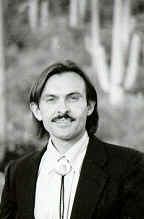We're wrapping up a weekend of Revisioning Medicine with Deena Metzger in Topanga Canyon, California, and preparing for our next event, which will be an interpretation and installation of the Plains winter hunt ceremony, as it relates to modern times. We'll be doing that at Rowe Conference Center the last weekend in January (for details, see http://rowecenter.org/events.php?event=349).
We've been intrigued by this series of ceremonies, since we first learned about them. Throughout the Northern Plains, people ceremonially re-enacted the hunt, the predator-prey relationship, each winter as a way to dialogue with the animals who were going to be hunted, and to request their cooperation in being hunted. The ceremony involved people actually becoming animals in order to facilitate this dialogue.
Native peoples of the Northern Plains used the Winter Buffalo Hunt ceremony for meditation and celebration before seeking the buffalo that would sustain them through hard winters. Thus, it was a kind of abundance ceremony, but dialogic, rather than monologic. The animals had to agree. These ceremonies were more than celebration. They involved an instantiation of the animals into the humans who danced for them, such that the ceremony was performed with the animals, whose spirits acted through their human hosts.
The idea of instantiation is known in Catholicism, and means that the spirit becomes flesh. In Catholicism, the wine is the blood of Christ. The bread is the flesh. In Protestant religions, the wine represents the blood and the bread represents the body. "Is" versus "represents". For the Native American cultures I have studied, instantiation is the rule. When you wear the mask of the animal, you are the animal. When people dance for the buffalo, they are the buffalo. It is not a symbolic representation.
Ask the animals, and they will teach you, or the birds of the air,
and they will tell you, or speak to the earth, and it will teach you,
or let the fish of the sea inform you.
-- Job 12: 7-8
The idea revolves around human-animal communication, a particular type that is implicit in the indigenous cultures I have studied, prevalent in children's literature, and dismissed by the mainstream adult world. The passage into adulthood is supposedly marked by the idea that only humans have language[1], yet we are learning more and more about animal languages.
North America's indigenous people start with the idea that animals are people and proceed to implement practices that foster trans-species communication. The non-indigenous popularization of this is the idea of power animals, a mistranslation and obfuscation of actual trans-species communication, which is unique, unpredictable, and non-formulaic. Real communication contains surprises and cannot be codified in a book or in cards (like the Medicine Cards that are so popular in certain quarters).




